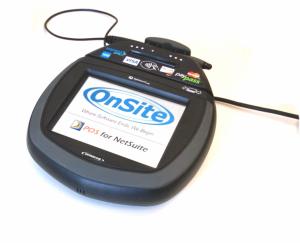Weaving the real-time web into brick-and-mortar retail

When I walked into Circuit City in San Mateo last September to buy a Flip Mino pocket camcorder, the visit summed up the clash of the old and the new that retailers are facing in the digital age. The manufacturer's website had referred the chain as a stockist, and my iPhone had helped me find my way to the nearest store. But I nearly walked out of there empty-handed because the assistant was having trouble finding the item on the shelves.
Circuit City has since gone out of business, along with a lengthening list of other familiar retail names. Another factor in many of these closures, according to one commentator writing about the demise of fitted kitchen and furniture chain MFI in the UK, is a focus on cost-cutting at the expense of staff skills and customer service. So long as consumers were flush with cash and almost limitless credit, retailers only had to open up shop and the takings would roll in. In today's changed climate, I believe the retailers that have continued to invest in providing a good customer experience (provided they didn't overextend their borrowings to do so) are the ones that will be best placed to survive.
Trouble is, the Web complicates the picture for retailers. For many purchases, consumers get a better customer experience from a well-automated website than they do from most retail stores. They can search easily, instantly see what's in stock, look up product specifications and discover personalized suggestions and offers based on their browsing and buying history. Few retailers hook up their online presence to take advantage of the one clear benefit of a brick-and-mortar presence — the possibility for a consumer to drive a few blocks and pick up their purchase today — and the minority that do rarely manage to match the quality of the online customer experience with the service levels their staff are equipped to offer in store.
This is difficult enough for large retail chains — even those with deep pockets — but it's a real challenge for the smaller retailers that often have the best record of personalized customer service in-store. How do they replicate that customer experience online without deprecating the service levels they're able to offer in person? In that context, I was pleased to learn about last week's launch by NetSuite of a new edition of the company's on-demand business operations suite that's been developed specifically to meet the needs of retailers that want to operate both online and on Main Street.
NetSuite's integrated suite approach is particularly well suited to this kind of requirement, where an established business needs to get online, but in a way that dovetails neatly with its existing operations rather than the online presence becoming almost another competitor. Speaking as a consumer, I especially like features that connect the online and real-world outlets, such as the ability to order online for in-store pickup, or for a customer to return a faulty or misdelivered product to a different location from where it was purchased. There's also support for individual customer self-service pages where customers can manage their account and check on delivery progress, amend outstanding orders or request returns.

Charter customers announced at launch last week include several examples of the kind of small retailers that I'd say deserve a chance to survive the downturn: Market Share, the operator of GetWirelessNow, a chain of eight cellular retailers in Connecticut and Rhode Island; EcoBox of Austin, Texas, which sells new and used packaging boxes through two retail outlets and online; and Wrigleyville Sports, which sells sports goods online and through retail outlets in Chicago and Pittsburgh.
Of course what's been announced in this first iteration is just a foretaste of the kind of online-to-real-world interaction we could see in the future. I'm looking forward to the next generation of Web-enabled in-store solutions, when the iPhone in my pocket could alert me to offers and new lines as I'm strolling through the store or even passing nearby. But only so long as I'm in charge of that interaction. Retail automation has to serve the consumer as much as it helps the retailer. If it makes my life easier as a consumer while helping my favorite stores to thrive, then so much the better.